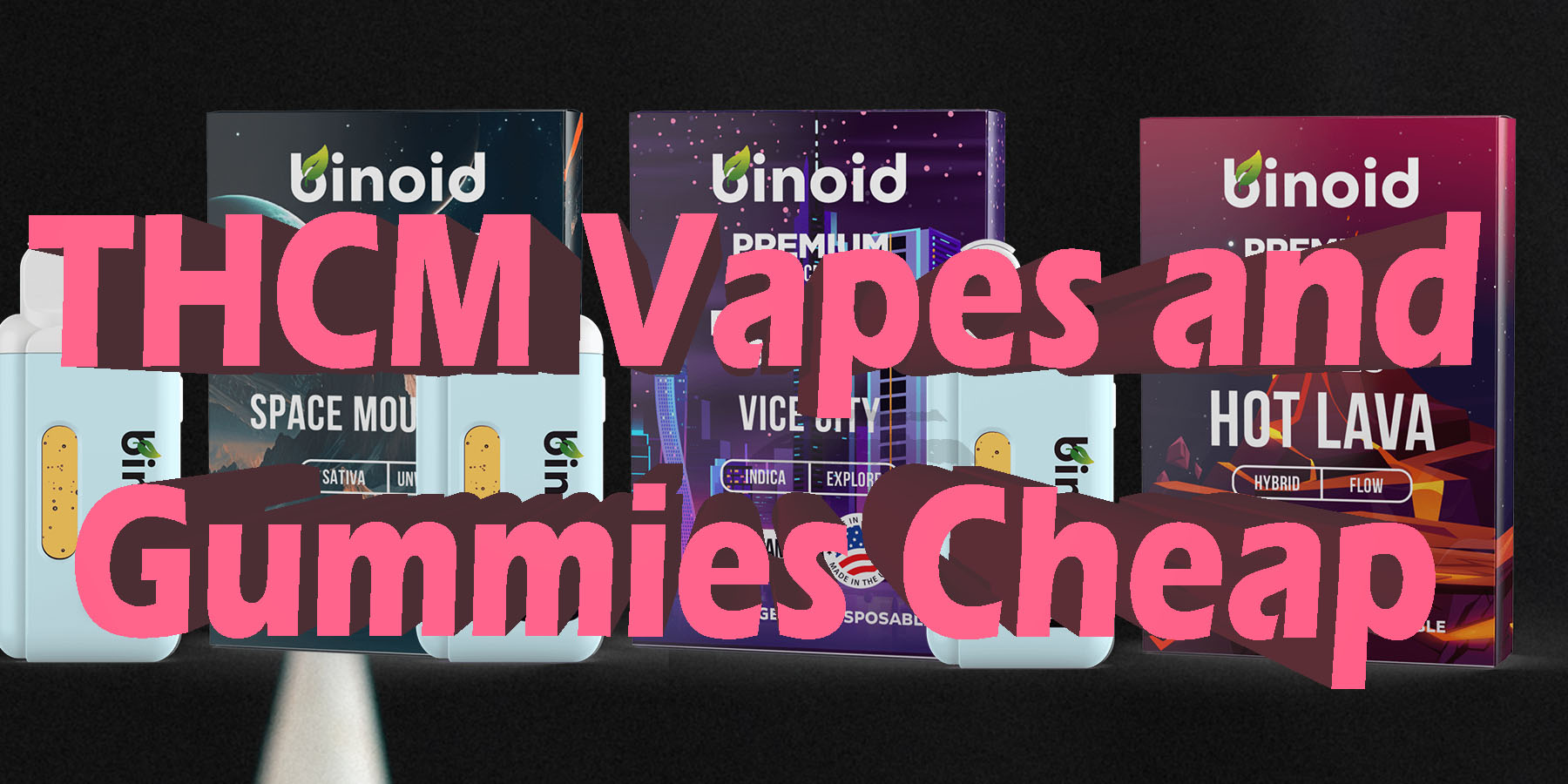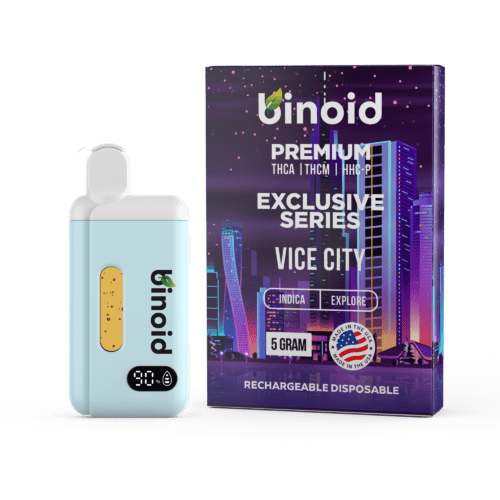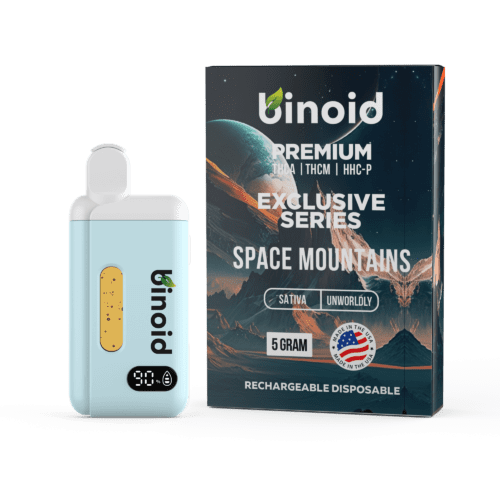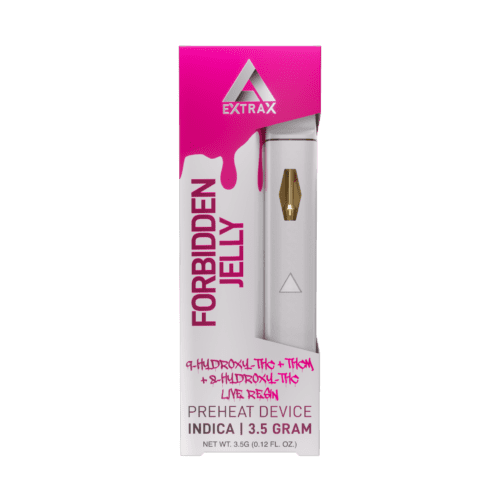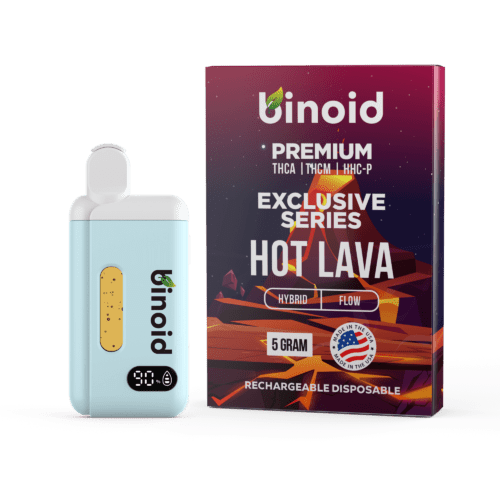The ever-evolving cannabinoid scene continuously introduces novel compounds, and names like THCM occasionally surface, sparking curiosity among dedicated cannabinoid explorers. Often presented alongside other potent compounds in specialized products, THCM draws interest from those seeking unique or different experiences within the market.
But as with any lesser-known compound, questions arise about its nature, availability, cost, and quality. If you’re encountering products labeled THCM and aiming to explore potential affordable options, careful navigation and understanding the context are essential. Let’s investigate the landscape surrounding products marketed as THCM, focusing on sourcing them cheaply while prioritizing verification and informed choices.
To Buy THCM Products Click Here
Recommended products
What is THCM?
11-Nor-Delta-9-Tetrahydrocannabinol-9-Carboxylic Acid {Carboxy-THC} (aka THCM) isn’t a new discovery, which makes it distinct from many of the cannabinoids that exist on the market right now. THCM was first detected in cannabis smoke in 1977 and isn’t even referred to in clinical contexts as a cannabinoid, but rather a cannabis byproduct that is present in cannabis smoke. It was further studied in the late 90s again. THCM is, in fact, a biomarker that is used to determine potential in-utero exposure to cannabis smoke for up to 5 months before birth. In other words, the reason why we even know that it exists is because it was discovered as a means to determine whether or not fetuses were exposed to cannabis while in the womb.
THCM hasn’t ever even been isolated in cannabis. While it can be detected for its one current clinical use, no researcher has ever actually isolated the compound in the plant. What this means is that for all intents and purposes, we don’t have proof that it exists in raw cannabis, because we only know, for now, that it is found in the smoke of the plant. This scientific definition as a non-psychoactive metabolite and combustion byproduct stands in contrast to how “THCM” might sometimes be referenced or marketed within the alternative cannabinoid product space, often alongside psychoactive compounds. Understanding this distinction is crucial when encountering products bearing the THCM label in the consumer market, as the labeled substance may differ significantly from the scientifically defined THC-COOH metabolite.
Its legal status itself is complex; as a metabolite it isn’t typically scheduled, but products marketed as THCM derived from hemp must still comply with overall Farm Bill regulations (<0.3% Delta 9 THC) and highly variable state laws regarding any novel or synthesized cannabinoid derivatives.
Why Even Consider Purchasing THCM?
Given the scientific understanding of THCM (THC-COOH) as a non-psychoactive metabolite primarily used as a biomarker, why might consumers encounter or consider purchasing products labeled “THCM” in the alternative cannabinoid market, especially affordable ones? The interest likely stems not from the properties of scientifically defined THCM, but rather from how the label is utilized in marketing novel psychoactive products, appealing to specific consumer motivations:
Novelty and Obscurity: The “THCM” label itself is obscure and unfamiliar to most consumers. Brands might use this term to market proprietary blends or novel synthetic compounds, attracting users specifically seeking something new, different, and potentially potent simply because it carries an exotic or scientific-sounding designation, irrespective of its actual chemical identity.
Marketing Claims of Unique Effects: Vendors selling products labeled “THCM” often create marketing narratives attributing unique effects to this label, perhaps suggesting synergistic properties when blended or implying novel psychoactive qualities distinct from THC or HHC. Consumers seeking unique forms of euphoria or relaxation might be drawn in by these specific, though scientifically unsubstantiated, marketing claims associated with the name.
Perceived Potency through Association: By including “THCM” (even if it refers to trace amounts of the metabolite or something else entirely) alongside known potent cannabinoids (like THC-P, HHC-P, etc.) in product descriptions or blend names, marketers can create an association with high potency. Users seeking intense effects might purchase these products believing the “THCM” contributes significantly, even if its actual role or identity is unclear.
Market Differentiation: In a crowded market of Delta 8, HHC, and THC-P blends, using a less common label like “THCM” allows brands to differentiate their products. Consumers looking for alternatives to mainstream novel cannabinoids might choose a “THCM” product simply because it seems different or less common, hoping for a unique experience.
Exploration of Market Offerings: For dedicated cannabinoid explorers tracking all new market entrants, encountering products labeled “THCM” prompts investigation purely out of a desire to understand what compounds or blends are being sold under this relatively undefined market term, fitting into a broader exploration of available hemp-derived innovations.
How to Choose Cheaper THCM
Selecting products marketed under the obscure label “THCM”, especially when seeking affordable options, requires the highest level of consumer skepticism and diligence focused entirely on safety and verification, given the profound lack of clarity surrounding what these products actually contain. Finding genuine value is exceptionally difficult; minimizing risk should be the primary goal. If considering cheaper “THCM” products (after confirming alignment with potentially prohibitive local regulations regarding novel/synthetic cannabinoids), applying these fundamental vetting practices is absolutely critical:
Uncompromising Certificate of Analysis (COA) Scrutiny: This is paramount for any product labeled “THCM.” Demand recent, comprehensive, batch-specific COAs from highly reputable, accredited labs known for analyzing complex novel cannabinoid blends. Examine these reports with extreme skepticism to:
Identify the Full Cannabinoid Profile: Determine exactly which cannabinoids are present and quantified (e.g., Delta 8, HHC, THC-P, etc.). Check if the lab even attempts to identify or quantify anything labeled “THCM” (highly unlikely for THC-COOH itself, potentially indicating a different marketed compound). Verify Delta 9 THC compliance (<0.3%).
Demand Critical Purity Screening: Explicit verification of testing for residual solvents, heavy metal catalysts (if hydrogenation is involved in other blend components), pesticides, microbials, and any potential unknown peaks or synthesis byproducts. Given the uncertainty, comprehensive purity data is non-negotiable.
Impeccable Brand Reputation and Full Transparency: Due to the extreme ambiguity, only ever consider products labeled THCM from the absolute most established, transparent, and exceptionally reputable brands with proven track records for safety and accurate labeling of other novel cannabinoid blends. Research exhaustively. Avoid unknown vendors or any brand marketing “THCM” without comprehensive, verifiable COAs for the entire formulation.
Cost Per Milligram of Known Active Cannabinoids: Since the value of “THCM” itself is unknown (or likely negligible if referring to the metabolite), assess value based on the cost per milligram of the verified psychoactive cannabinoids present in the blend (e.g., $/mg of Delta 8 or HHC identified on the COA). Do not assign value to the unverified “THCM” component when calculating affordability.
Extreme Dosing Caution Based on Blend: Dose based on the known potent cannabinoids identified in the blend (HHC, THC-P, etc.), assuming the “THCM” adds little or unknown effect. Start with an absolutely minuscule test dose of the product overall and wait several hours to assess the effects of the entire formulation. Do not rely on any marketed claims about THCM’s specific potency or effects.
Source Material and Production Transparency: Favor brands offering clarity regarding the hemp source for the primary cannabinoids in the blend and the laboratory standards employed for formulation and testing. Verifiable information adds crucial confidence.
Choosing cheaper products labeled “THCM” responsibly means focusing entirely on the verified quality, purity, and potency of the known cannabinoids in the blend from an exceptionally trustworthy manufacturer, while treating the “THCM” label itself with extreme skepticism.
Recommended products
What Types of THCM Products Can Someone Buy Cheap?
Products marketed with the label “THCM” are found almost exclusively within the online hemp-derived cannabinoid market, often positioned as novel or potent offerings despite the scientific ambiguity surrounding the term. Finding “cheap” THCM products typically means sourcing affordable versions of what are invariably cannabinoid blends, where “THCM” is listed as an ingredient alongside more established psychoactive compounds like Delta 8 or HHC. Given the lack of clarity about what market “THCM” actually is, extreme caution regarding legality, safety testing, and dosing is essential for all formats. Based on your specific instructions, here’s a detailed look at the only two product types where affordable “THCM” blends might be marketed:
Vape Cartridges: This is a primary format where blends labeled with “THCM” are likely encountered affordably. These cartridges typically contain a base distillate, frequently cost-effective Delta 8 THC or HHC, mixed with various other cannabinoids and terpenes, with “THCM” listed as one component (its actual contribution being highly uncertain). The competitive online vape market offers numerous such complex blend cartridges at low prices, but assessing value requires intense scrutiny of comprehensive COAs to identify the actual quantifiable psychoactive ingredients (like Delta 8, HHC, etc.), verify Delta 9 compliance, and confirm purity from all contaminants. Hardware quality in cheaper carts and the inherent risks of inhaling complex, potentially untested novel blends remain significant considerations. Treat any “THCM” potency claim with extreme skepticism.
Disposable Vapes: Offering convenience, disposable vapes feature similar complex cannabinoid blends marketed affordably online, sometimes including “THCM” on the ingredient list alongside known psychoactive compounds like HHC or Delta 8. When evaluating budget options, focus entirely on the verified potency of the known psychoactive cannabinoids via COA, overall oil volume, device reliability, and brand reputation. The presence of “THCM” on the label should be viewed with skepticism regarding its actual identity and contribution; rely only on verified data for other cannabinoids for dosing considerations. Rigorous purity testing confirmed via COAs and secure handling are vital.
Potentially Buying Certain THCM Products Cheap That Also Use Cannabis Concentrates
Exploring the theoretical possibility of combining products labeled “THCM”—a term lacking clear scientific definition in the consumer market and likely referring to novel synthetic compounds or blends—with premium natural cannabis concentrates like Live Resin or Live Rosin ventures into highly speculative and improbable territory, especially concerning affordability.
These high-quality concentrates are defined by their rich, authentic terpene profiles derived from fresh-frozen cannabis, representing the pinnacle of natural flavor and aroma, a stark contrast to the obscure and likely lab-derived nature of market “THCM”. While one could hypothetically imagine blending purported THCM into these premium bases, the significant costs, technical hurdles, lack of definition for THCM, and compounded safety verification needs make finding such combinations affordably virtually impossible through responsible channels.
Considering Live Resin, typically produced via solvent extraction of uncured cannabis, its value lies in capturing vibrant terpenes. An ultra-premium vape might theoretically involve adding trace amounts of a substance marketed as THCM into a genuine CBD or Delta 8 Live Resin base. However, the combined costs of quality Live Resin and safely producing/verifying even trace amounts of an ill-defined compound like market “THCM” push such concepts far beyond typical affordable ranges. Products marketed cheaply as “THCM Live Resin” almost certainly involve misrepresentation of one or both components or critical compromises on the purity testing essential for any novel synthesized ingredient.
The combination with Live Rosin, the premium solventless concentrate prized for purity, faces even greater barriers. Live Rosin’s meticulous, chemical-free production results in high costs. Blending this pristine natural extract with a poorly defined, likely synthetic, legally ambiguous compound marketed as THCM would require extraordinary (and likely unavailable) expertise in ensuring stability and safety, catering perhaps only to an unregulated experimental niche at extreme prices, if at all. Finding affordable, trustworthy versions is essentially inconceivable, and any such claims demand maximum skepticism.
Therefore, while conceptually imaginable, marrying the marketed attributes of “THCM” with the sensory quality of Live Resin or Live Rosin remains firmly outside the practical sphere of affordable, responsibly produced products. Market realities position such hypothetical blends as ultra-premium and exceptionally high-risk due to the PHC component’s uncertain nature.
Consequently, individuals exploring budget-friendly options for products labeled THCM must realistically expect to find this label used in blends based on standard, cost-effective distillates like Delta 8 or HHC, where the absolute focus must remain on attempting to verify the identity, purity, and potency of all components through rigorous testing from exceptionally reputable sources, treating the “THCM” claim itself with significant doubt.
Potentially Buying THCM Products Cheap That May Also Combine Multiple Cannabinoids
Given that “THCM” as found in the affordable consumer market lacks a clear, scientifically validated identity as a standalone psychoactive agent (distinct from the metabolite THC-COOH), virtually all products bearing this label are necessarily complex cannabinoid blends. These formulations, primarily available as Vape Cartridges and Disposable Vapes, combine the purported “THCM” (whatever compound or blend it actually represents) with other cannabinoids to achieve marketable price points and desirable psychoactive profiles.
Moderate potency cannabinoids frequently form the primary psychoactive base in affordable vape products labeled with THCM. Delta 8 THC is very often the main ingredient due to its low cost and availability, with “THCM” perhaps listed as a minor component alongside potentially other potent enhancers. Compliant Delta 9 THC (<0.3% from hemp), Delta 11 THC (another less common THC isomer), or THCA-derived Delta 9 might also be included in these affordable “THCM” vape blends to contribute familiar THC effects potentially perceived as modified or enhanced by the overall formulation marketed as containing THCM. It is critical for consumers to rely on COAs to identify the actual primary psychoactive drivers in these vape blends.
Furthermore, targeting users seeking maximum intensity, some affordable vape products labeled “THCM” might be potent cocktails combining it with other strong cannabinoids. It’s common to find purported THCM blended with HHC or its potent variants like HHC-O or HHC-P. Additionally, seeking extreme effects, brands might offer competitively priced vape blends layering claimed THCM with powerful THC analogues like THC-B, THC-H, THC-JD, or THC-P.
Recommended products
Where to Buy THCM Cheap
Sourcing products labeled as “THCM,” particularly affordable options, involves navigating the most speculative and least transparent segments of the cannabinoid market due to its uncertain chemical identity, lack of scientific validation, and questionable legal status. Availability is extremely limited and concentrated in channels demanding maximum consumer diligence regarding safety and verification over price. Below is a breakdown of potential purchasing locations, viewed with appropriate caution:
Licensed Suppliers/Specialty Stores: Finding products labeled THCM in physical retail hemp stores is highly improbable and legally questionable. Given its undefined nature and likely synthetic status if potent, THCM would almost certainly fall under state laws restricting or banning such compounds in most jurisdictions. Verifying local legality is essential but likely prohibitive. Even if found, verifying the identity, purity, and potency through reliable COAs is virtually impossible in this setting, making it an unsuitable channel.
Online Retailers: The only channel where products labeled as THCM are likely marketed is online, via websites specializing in novel/potent hemp-derived cannabinoids, often like Binoid for example, operating within a complex legal and safety landscape. Some may offer THCM blends (primarily vapes per prompt) at competitive prices. This avenue requires maximum due diligence.
Online Wholesalers: Primarily serving businesses, online wholesalers deal in bulk cannabinoids. Direct consumer purchase of bulk compounds marketed as THCM carries immense risks regarding purity verification, identity confirmation, safe handling, legality, and accurate formulation, making it unsuitable.
Note: Sketchy head shops, flea markets, online marketplaces (eBay, Facebook, Craigslist) – never seek THCM or similar obscure, questionable compounds from these sources. The probability of receiving untested, dangerously impure, counterfeit, mislabeled, or illegal products is astronomical, rendering any perceived low price irrelevant compared to the severe potential harm.
Is Buying THCM Cheap Always Better?
When considering products marketed as “THCM“, a label associated with significant scientific ambiguity and likely representing complex synthetic blends rather than the well-defined metabolite THC-COOH, the question of whether “cheaper is always better” is firmly answered with a “No.” Prioritizing affordability for such an ill-defined product category is exceptionally risky, as the compromises potentially made to achieve low prices directly impact the fundamental requirements of knowing what you are consuming and whether it is safe, rendering cheap options poor value and potentially hazardous.
The most critical issue with cheap products labeled “THCM” lies in unknown chemical identity and purity. Without clear scientific standards or confirmed natural origins for the marketed compound, these products carry an enormous risk of containing misidentified substances, inconsistent formulations, residual solvents, catalysts, or entirely unknown hazardous byproducts from unregulated synthesis processes. Rigorous, specialized analytical testing (COAs) is needed even to attempt identification and ensure purity. Such comprehensive testing is expensive, meaning rock-bottom prices virtually guarantee its absence, exposing users to completely unknown chemical risks with unpredictable consequences.
Accurate potency assessment is also nearly impossible for cheap “THCM” products. Since the identity of the active compound(s) marketed as THCM is unclear, and it’s invariably in blends, relying on labels for potency information is highly unreliable, especially with budget vendors lacking stringent quality control. Verifiable COAs quantifying all known psychoactive cannabinoids in the blend are the only way to estimate potency, making the “THCM” label itself almost irrelevant for dosing calculations. Cheap products lacking this comprehensive analysis present significant risks of unexpected or overwhelming effects.
The complex and likely unfavorable legal status further undermines prioritizing cheapness. As likely synthetic intoxicating compounds, products marketed as THCM almost certainly fall outside federal hemp law interpretations for many regulators and are probably banned under numerous state laws. Cheap THCM products might be inexpensive precisely because they operate entirely outside legal controls, carrying significant legal risks for purchasers. Verifying alignment with thoroughly researched local regulations is essential before considering any purchase.
Ultimately, given the profound lack of scientific validation for market “THCM,” the immense risks of unknown chemical impurities, the extreme hazard of inaccurate potency information, and its probable restricted or illegal status, the pursuit of “cheap” THCM is fraught with unacceptable risks. “Better” in this context can only mean prioritizing maximum achievable safety through sourcing products (likely standard blends mislabeled as containing THCM) from only the most exceptionally reputable manufacturers who provide comprehensive, verifiable testing for all known components, factors inherently opposed to seeking the lowest price for products carrying such an ambiguous label.
The Importance of Properly Storing Cheaper THCM Products
Given the significant uncertainties surrounding products labeled “THCM“—including their actual chemical composition, potency, potential effects, and likely synthetic origin—implementing rigorous storage practices, regardless of price, is a critical aspect of safety and responsible handling. Proper storage aims to maintain the chemical stability of the known cannabinoids within the blend, prevent degradation, and most importantly, ensure these potentially potent and ill-defined products are securely stored away from any possibility of accidental ingestion or misuse,
Experience Affordable and Effective THCM Cheap Today!
For the cannabinoid explorer intrigued by novel market labels like THCM, navigating available options requires exceptional diligence and a primary focus on responsible sourcing, especially when considering affordability. This journey into products marketed with unique claims necessitates prioritizing safety and thorough verification of all blend components through comprehensive testing from reputable sources.
Focus exclusively on finding products from the most established and transparent manufacturers who provide clear proof of purity and accurate potency for the known cannabinoids present, treating the “THCM” label with due skepticism. Seek value where possible, but only strictly within the narrow confines of products meeting critical safety and verification benchmarks for navigating this uncertain corner of the cannabinoid market.

